
Tomatoes are one of the first crops people consider growing in their gardens, appreciated for their ease of growth and versatility. However, these benefits come with one major caveat – disease.
Tomatoes are incredibly prone to pests and disease problems that threaten to ruin your entire harvest for the year (and even future years) if not tackled.
Blight is a term most tomato gardeners will be familiar with and incredibly fearful of. Let’s take a look at tomato blight and how it can be treated or prevented so you can secure your harvest this year.
What is Blight?
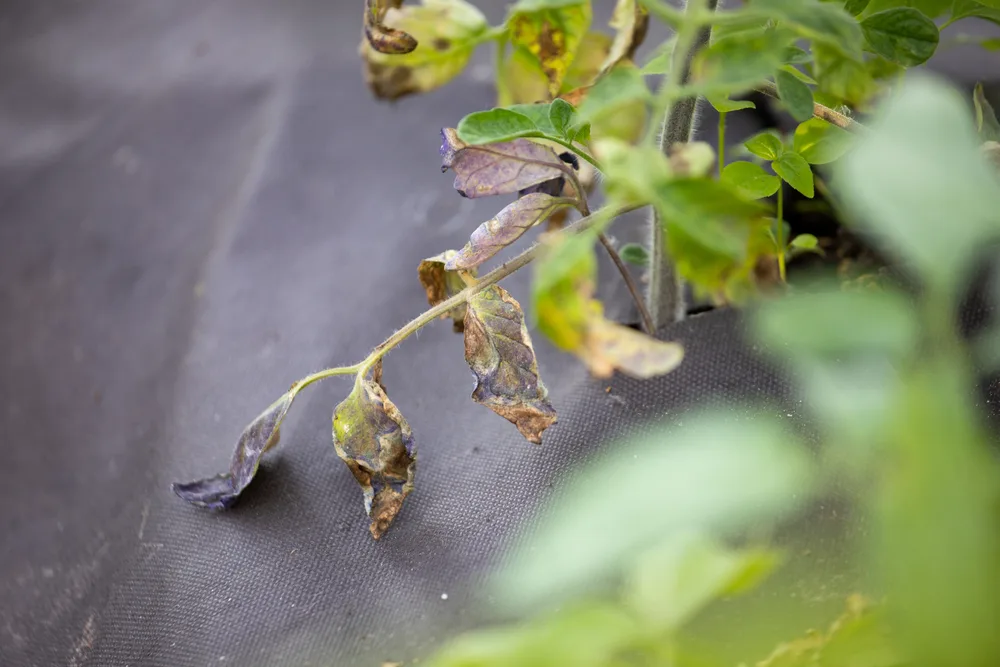
Blight is a disease that affects not only tomatoes but several common crops in your vegetable garden. It is a common problem in tomato gardens and spreads rapidly, quickly spelling the end of your tomato growing season if not prevented or controlled.
The first signs of blight generally appear on older leaves of the plant, spreading from there to newer leaves and even to the fruits. But the exact symptoms and subsequent treatment will largely depend on the type of blight you are dealing with.
Different Types of Blight
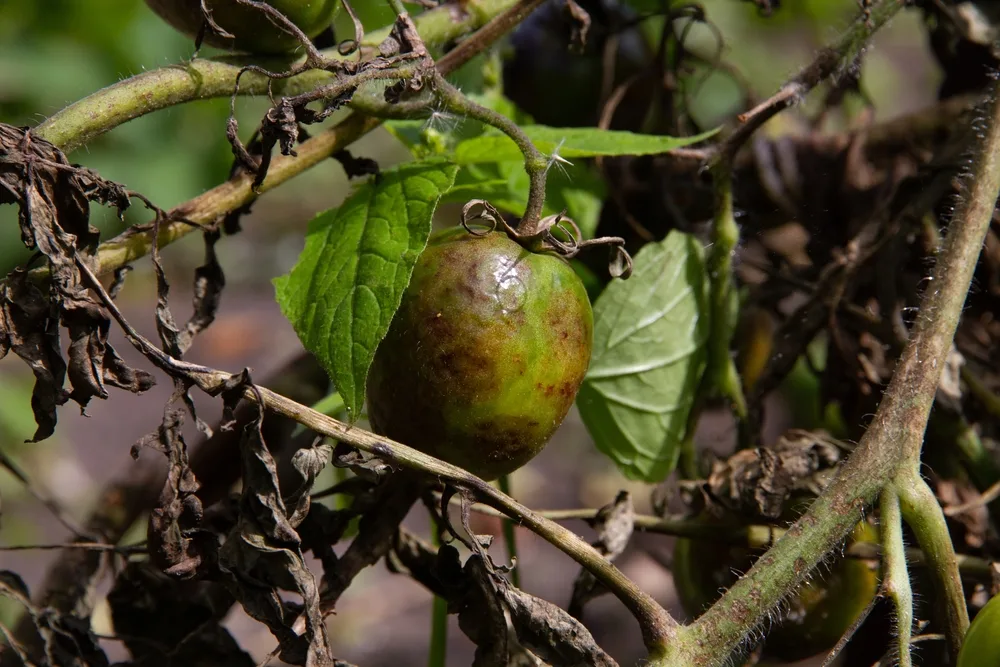
There are three different types of blight that commonly attack tomatoes, each with varying levels of damage.
Late blight is one of the more common and usually the type referred to when using the term ‘tomato blight’. It is caused by Phytophthora infestans, the fungus that lead to the devastating potato famine in Ireland in the 19th century. This event gives just a small hint of how damaging late blight can be.
Early blight is another type to look out for, caused by Alternaria solani. This fungus resides in the soil, popping up when conditions are right and spreading around your tomato and potato plants. Early blight is most common in wet and humid conditions where fungi thrive.
Another problem that pops up during wet weather is Septoria leaf spot, named after the fungus Septoria lycopersici. This blight is considered the easiest to treat and control, as long as you catch it early enough. It is also far less damaging to your plants than the other types of blight.
What Are The Signs of Blight On Tomatoes?
Early Blight
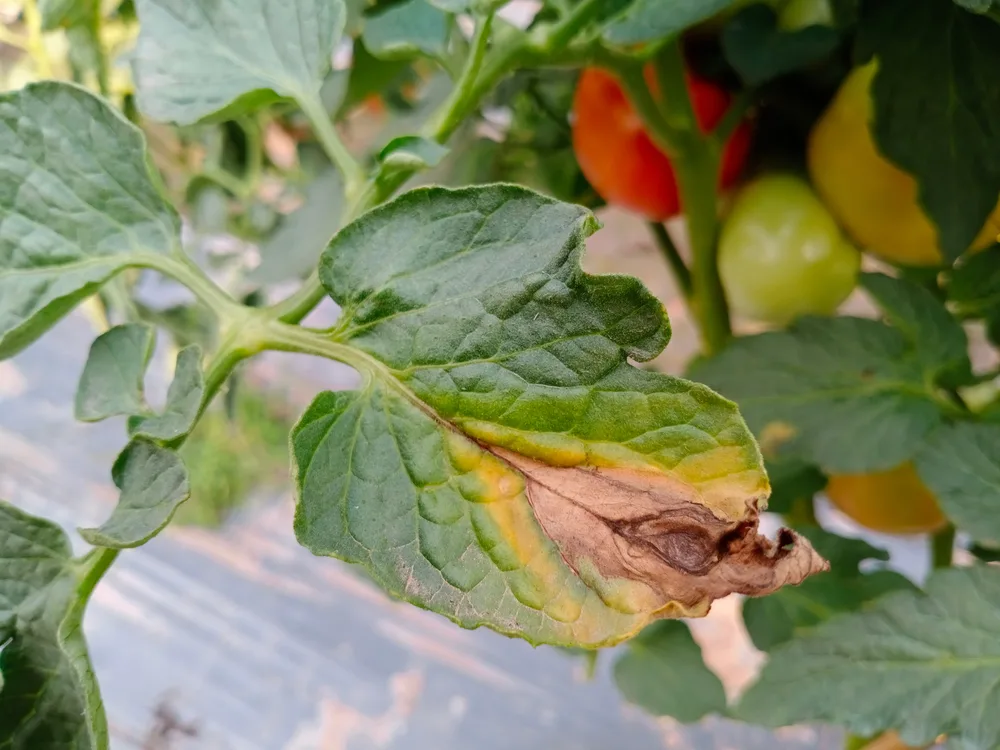
When your tomato plant is infected with early blight, you’ll notice brown spots appearing on older leaves. These spots have concentric rings that make the area look like a bullseye. If the problem spreads, the spots will begin to appear on new leaves, stems and even the tomato fruits.
These spots may be surrounded by a yellow ring as they spread, but can also be solid brown. Any area that the problem appears on will become damaged, with leaves dropping, stems becoming sunken, and tomato fruits falling off the plant.
Late Blight
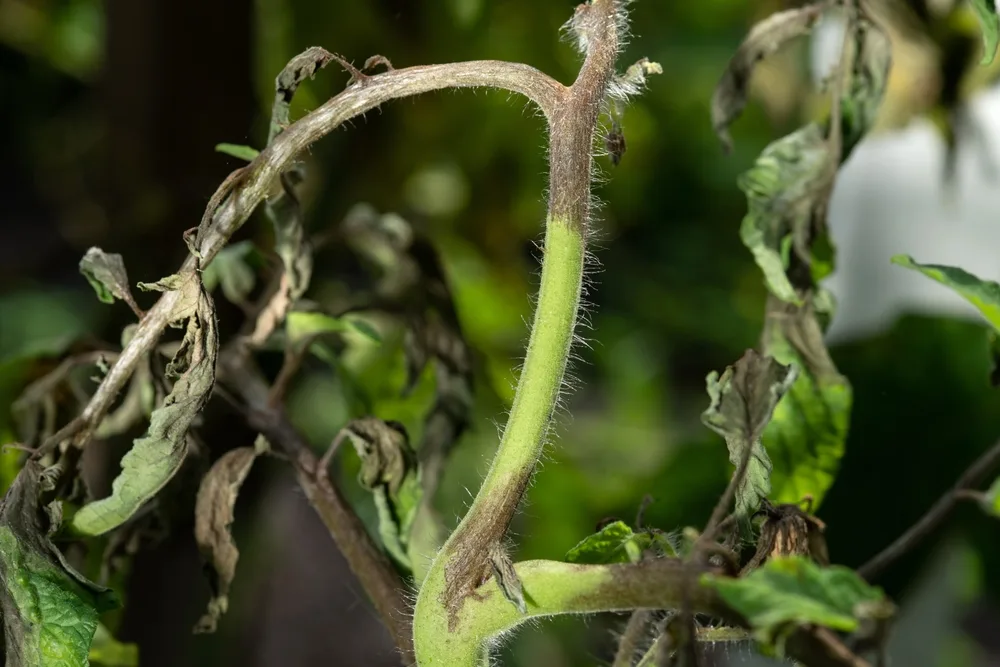
Leaves also develop spots when tomato plants are infected with late blight, but their appearance is slightly different. Look for irregular discolored grey or brown patches that start at the center of the leaf and travel outward. They also have a fuzzy appearance as if the plant is infected with mildew.
These areas of damage may also be surrounded by slight yellowing. Stems will turn black, developing a white fluff containing spores of the fungus. Fruits will also begin to rot and turn brown, usually from the top of the fruit traveling downwards.
Late blight is more common in cooler weather, as opposed to early blight and Septoria leaf spot that are more common in warm and wet weather.
Septoria Leaf Spot
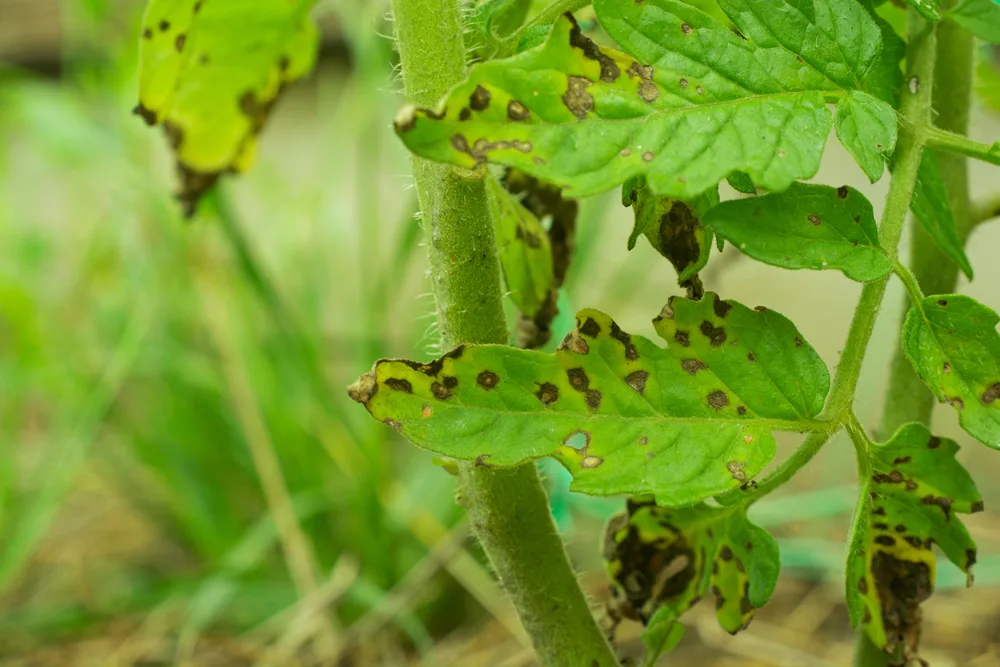
Septoria leaf spot requires a close eye to spot as symptoms begin on the leaves closest to the ground, working their way up. Look for small, rounded spots that start out yellow, eventually turning brown and then black. These will usually only appear on the leaves, not the fruits, making identifying much easier.
How To Treat Blight
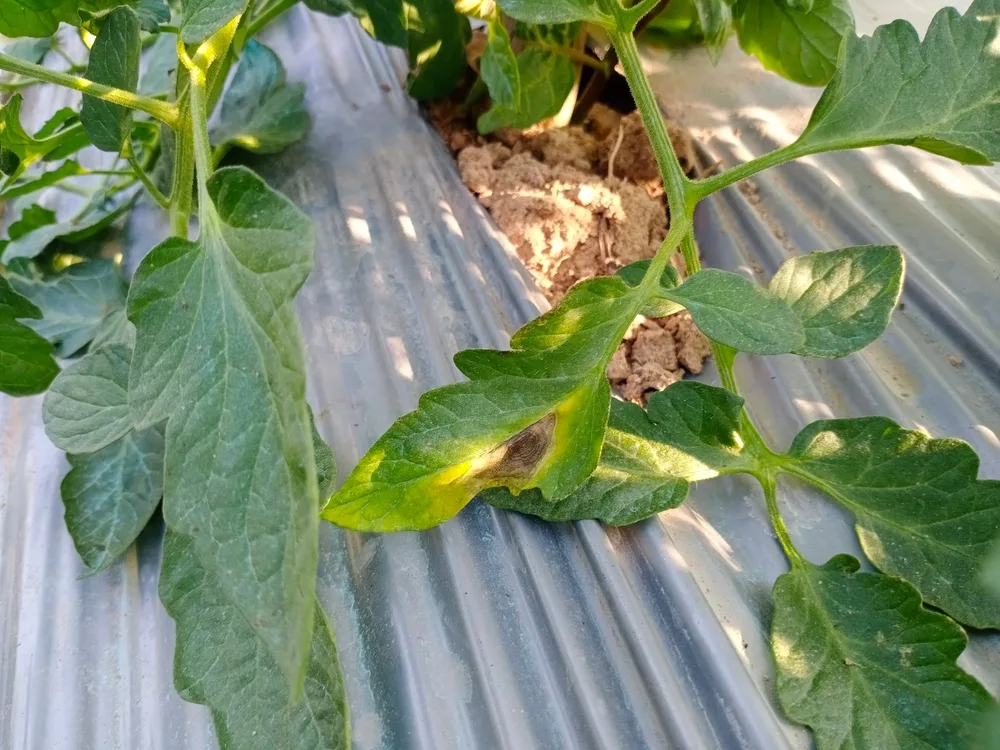
Unfortunately, as with most serious diseases, blight is incredibly difficult to treat unless you catch it before it starts spreading rapidly.
When dealing with early blight or Septoria leaf spot, pruning off the affected leaves and stems immediately may slow progression enough to get it under control. After pruning, you can apply a preventative copper-based fungicide to stop any spread, continuing to prune until all signs of disease are gone.
After pruning, make sure you clean your tools and gloves thoroughly to stop the problem from spreading to any other plants. Keep a close eye on the tomatoes for further signs of spread. If you cannot get the disease under control, it’s best to pull the plants completely and discard them.
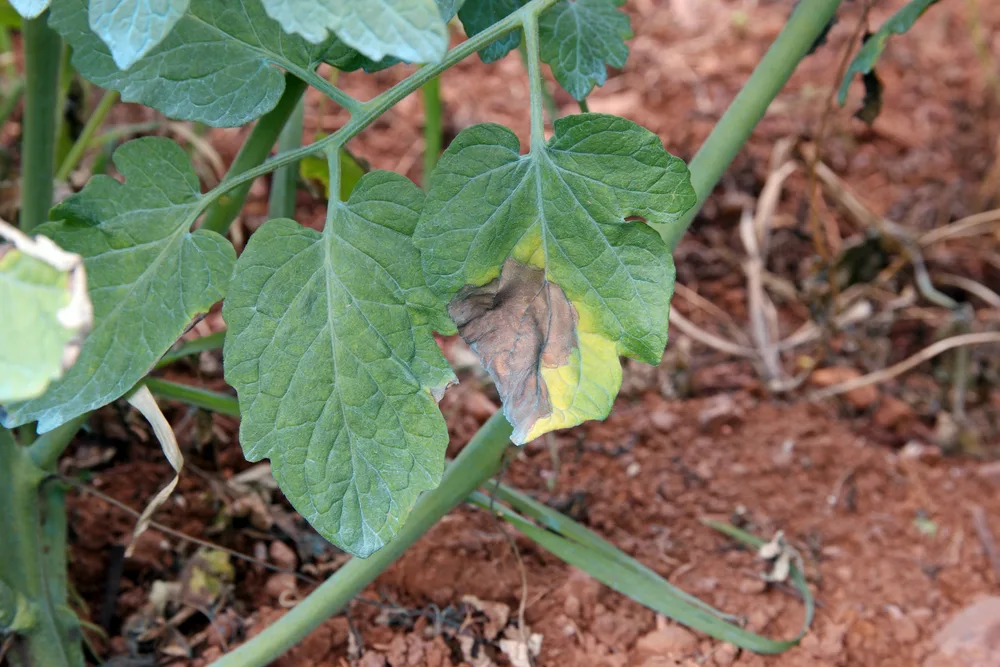
Never throw any diseased cuttings or entire plants on your compost heap. This will provide an ideal home for the diseases to grow and spread through the compost to the rest of your garden.
When it comes to late blight, it’s usually best to skip the treatment step and pull the plants straight away. If this fungus gets a chance to spread, it will cause damage across your vegetable garden and can remain in the soil for years to come. It can also spread to neighboring gardens, furthering the damage.
As difficult as it is to end a season early, it is far better to remove infected plants and try again next year than to try to control the problem and only spread it further.
7 Ways To Prevent Blight
Rather than treating blight when it occurs, use these tips to limit your risk of exposure.
Provide Adequate Spacing
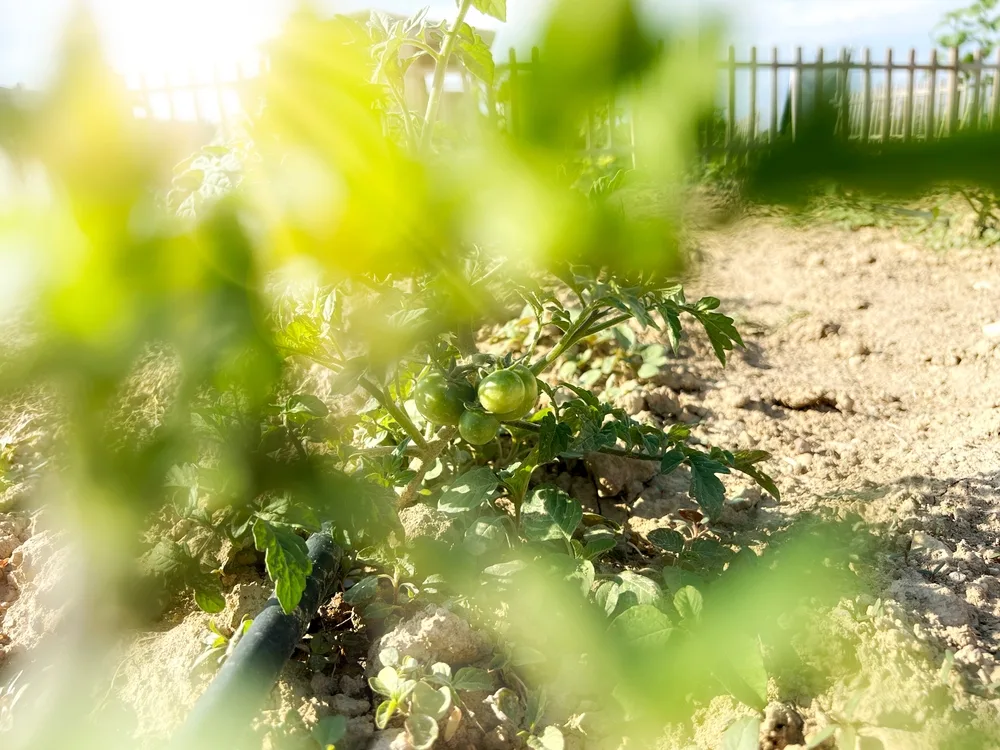
Spacing plants correctly is key in preventing blight and a wide range of other tomato diseases. Proper airflow between foliage and entire plants limits the ability of the fungi to spread, making prevention and control far simpler.
Follow this guide to space your tomato plants correctly and don’t forget to prune throughout the year to make space between the leaves.
Water Correctly
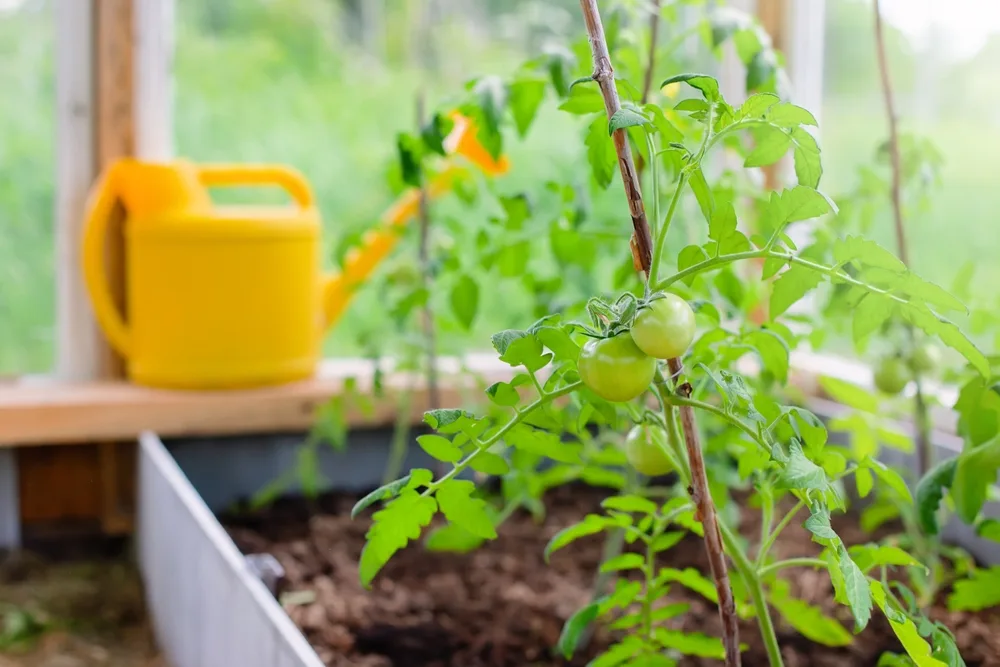
All types of blight love wet weather and thrive during periods of strong rain. But rain isn’t always the only culprit. Your watering methods can also contribute to the levels of moisture around the leaves, encouraging fungal growth that spreads further.
Make sure you water only the soil, not the leaves, or install drip irrigation to make the process far simpler. Mulch around the base of your plants to limit any soil splashing up onto the foliage, transferring soil-borne pathogens. Also prune any foliage that touches the soil throughout the season.
Plant in Full Sun
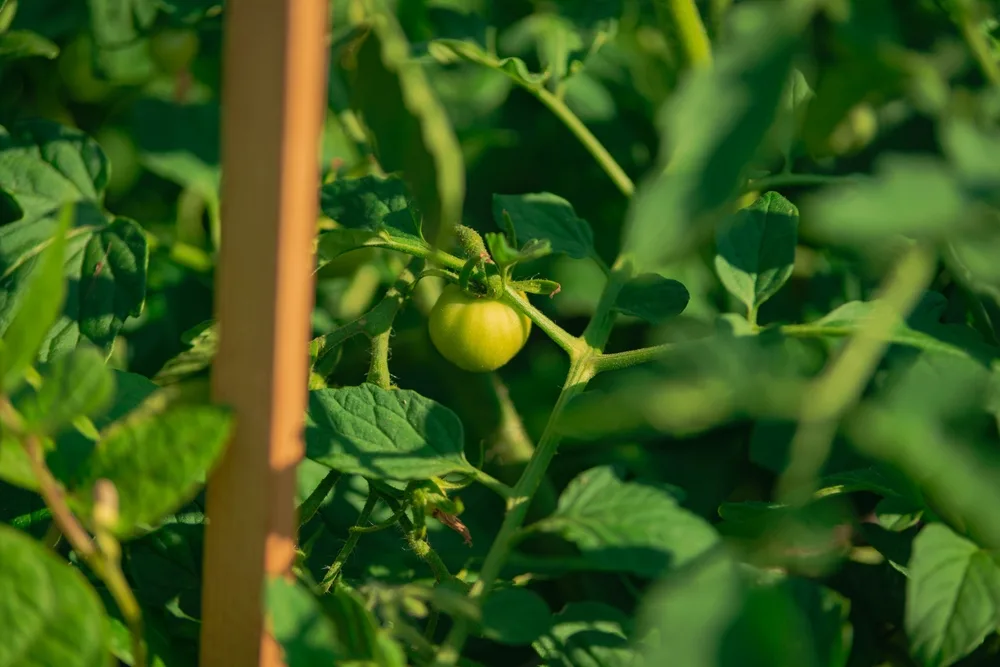
Tomatoes should be planted in full sun for the highest yields, but the correct light levels can also limit your risk of disease. Any excess water around your tomatoes will evaporate quicker in full sun, especially when watering in the early morning. This limits the opportunity fungus has to settle, lowering your chances of blight.
Full sun also makes the plants healthier overall, less likely to attract diseases like blight in the first place. Remove any vulnerable or damaged growth to improve health further and give your tomatoes the strongest chance at growth.
Stake Your Plants

While some varieties of determinate tomatoes can grow upright on their own without help, most will require staking. This improves fruiting and also keeps any trailing foliage off the ground, preventing the transfer of fungus.
Choose Resistant Varieties
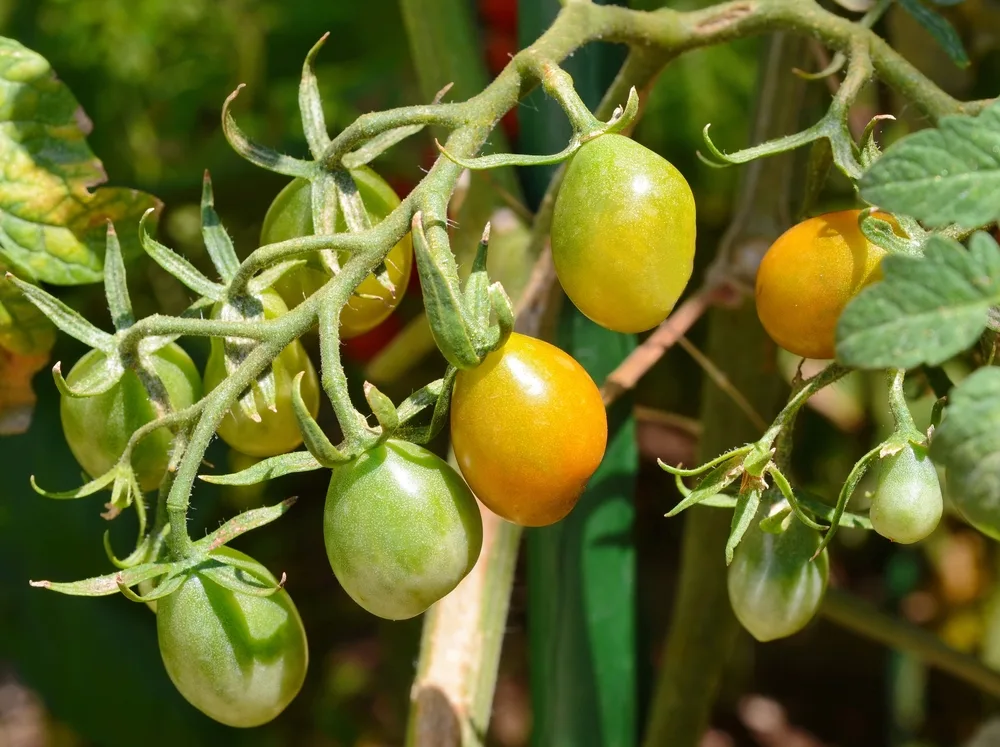
If you know plants in your garden are prone to blight, start by choosing the right tomato variety. While blight-resistant varieties aren’t completely immune to disease problems, they are far less likely to encounter them, protecting your crop and saving your tomato season.
Rotate Your Plants Each Season
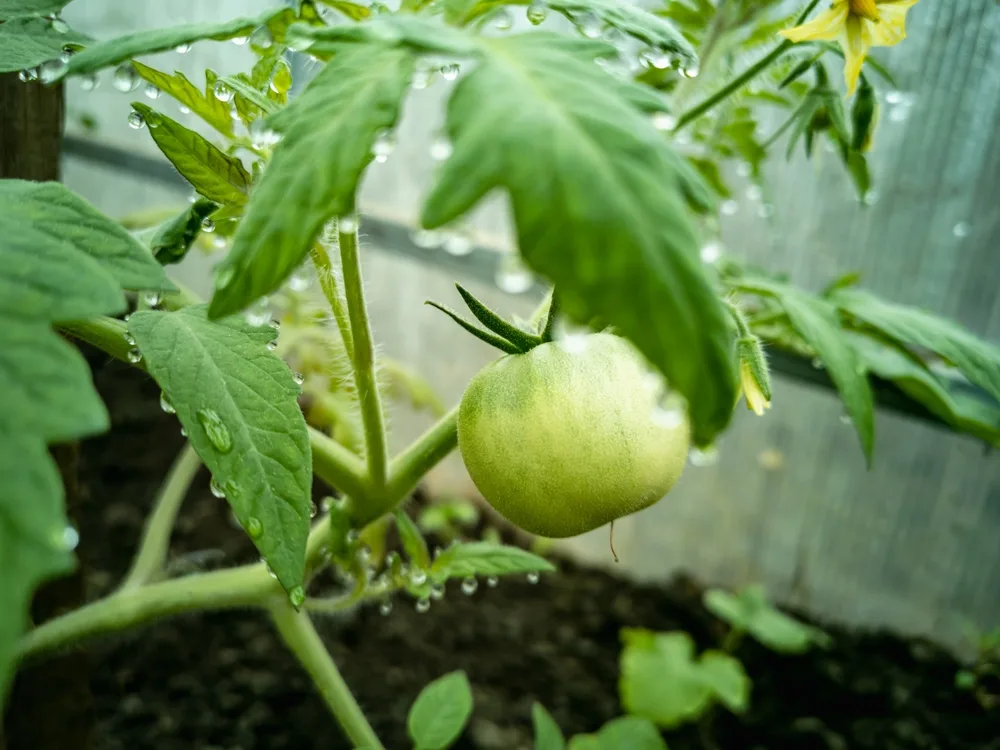
Blight can remain in the soil and spread year after year, affecting newly planted members of the Solanaceae family. Avoid planting Solanaceae plants (potatoes, eggplants and peppers) close together to limit the risk of disease and rotate the plants each season to avoid further development and spread of the problem.
Check On Your Plants Often
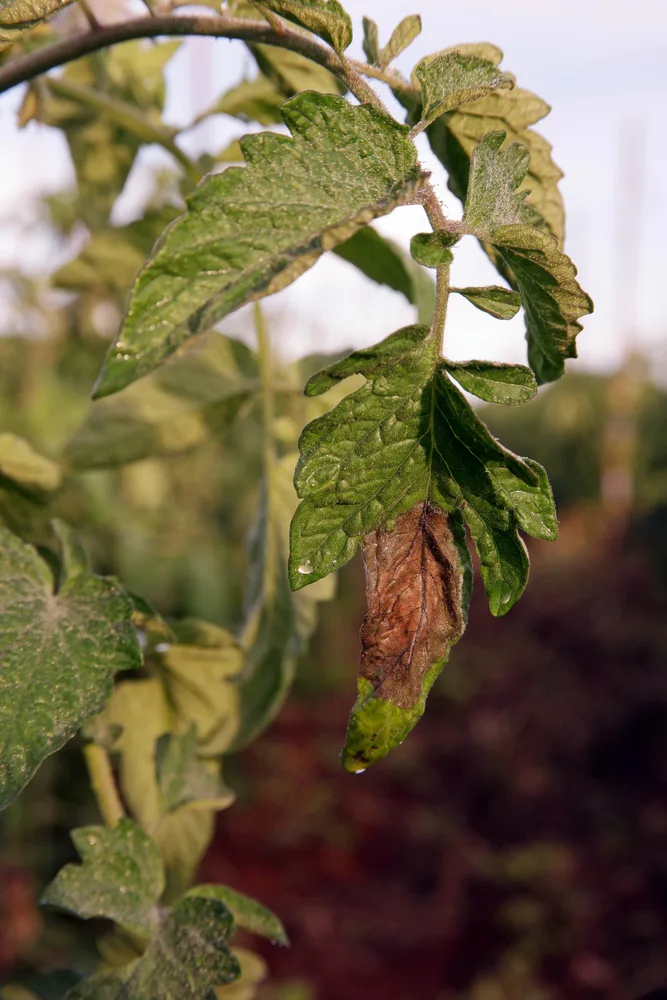
The most important part of disease management is a keen eye. If you catch issues as soon as they pop up, you have a chance of controlling them and protecting the rest of your plants. Blight can spread incredibly quickly, so be sure to check on your tomatoes daily if you know they are prone to disease.
